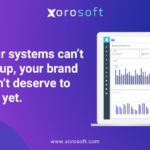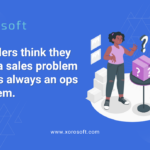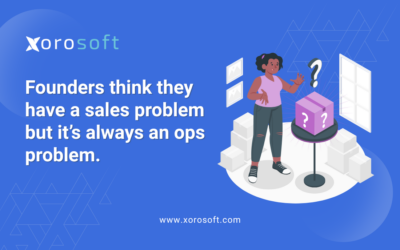
Why Ecommerce Operations Management Matters for Growing Brands
Running an ecommerce brand is exciting — until ecommerce operations management becomes your biggest obstacle. As your store grows, spreadsheets multiply, systems stop syncing, and every day turns into another round of firefighting.
As a result, orders slip, inventory counts fall out of sync, and your team spends more time fixing yesterday’s mistakes than planning tomorrow’s growth. When chaos runs your operations, momentum fades, and scaling becomes stressful instead of strategic.
However, when your back office runs smoothly, growth feels simple again.
That’s where modern ecommerce operations management software changes everything. It connects your data, automates your workflows, and creates the clarity your team has been missing.
Why Brands Fall Into Operational Chaos
Most DTC and omnichannel teams start lean: Shopify manages sales, spreadsheets handle inventory, and accounting lives elsewhere. It works — until volume grows and communication breaks down.
Because of this, you may see the same recurring symptoms:
-
Endless spreadsheets that require constant updating.
-
Inventory mismatches that frustrate both your team and customers.
-
Manual order reconciliation that delays shipping.
-
Operations dependent on one or two people’s memory.
-
Zero real-time visibility into performance or cash.
Eventually, these cracks turn into daily bottlenecks.
In addition, disconnected systems make it impossible to trust your data. Without clear visibility, decisions rely on guesswork — not insight. That’s why centralizing with ecommerce operations management software isn’t a luxury; it’s a survival move.
The Benefits of Unified Ecommerce Operations Management
When your operations are aligned under one platform, you can finally focus on what matters — growing your brand with confidence.
Effective ecommerce operations management replaces chaos with clarity by:
-
Creating one real-time view of inventory, orders, and cash.
-
Automating tasks that used to require manual input.
-
Improving accuracy in fulfillment, forecasting, and finances.
-
Reducing costly errors and overselling.
-
Freeing your team to focus on strategy instead of spreadsheets.
For example, when all systems communicate automatically, you immediately reduce duplicate work and improve decision speed. Consequently, your business starts to feel stable — not reactionary.
Key Metrics That Show Progress
You’ll know your operations are improving when core metrics start moving consistently in the right direction:
-
Pick accuracy: Orders ship correctly the first time.
-
Order cycle time: Orders move faster from sale to delivery.
-
Inventory turnover: Products convert to revenue more efficiently.
-
Cash conversion cycle: Cash flows through your business faster.
-
Forecast accuracy: You restock smarter, avoiding dead inventory.
Together, these numbers prove your ecommerce operations management system is creating measurable, profitable stability.
How to Create a Scalable Back Office
When your foundation is organized, every new sales channel, campaign, and product launch becomes easier to manage. Here’s how to build a structure that scales calmly and confidently.
1. Audit Every Operational Process
Start by mapping where your time and accuracy are lost. Identify manual handoffs, disconnected data, and recurring mistakes.
Therefore, this audit becomes your roadmap for what to automate first.
2. Centralize All Systems
Unify Shopify, accounting, and fulfillment data in one place. With integrated ecommerce operations management software, everyone can access live information.
In addition, automated synchronization eliminates the need for manual updates and reduces the risk of human error.
3. Automate Routine Workflows
For example, automate purchase orders, restocks, and order routing so your team can focus on strategic work. Each automation compounds over time, saving hours per week and boosting consistency.
Furthermore, this is where most brands see their fastest ROI.
4. Standardize Fulfillment Procedures
Document each fulfillment step — picking, packing, and shipping — and train your team to follow it consistently.
Because of this, your pick accuracy increases and your customers receive orders faster.
5. Strengthen Financial Visibility
Connect your accounting platform to your back-office system so COGS, cash flow, and sales update automatically.
As a result, you can make decisions based on current numbers instead of outdated reports.
6. Empower and Align Your Team
Give every team member ownership of their area within your ecommerce operations management system.
When accountability is clear and visibility is shared, collaboration naturally improves. Consequently, you’ll see fewer delays and faster issue resolution.
7. Measure and Adjust Regularly
Every month, review your top KPIs — pick accuracy, order cycle time, and cash conversion.
If those metrics improve steadily, your back office is functioning as intended. On the other hand, if they stall, revisit your workflows to identify the next automation opportunity.
This ongoing rhythm keeps chaos from returning.
A Real Brand Transformation Example
Consider a mid-sized apparel brand running Shopify, QuickBooks, and spreadsheets. Orders were increasing, but their back office was overwhelmed.
After implementing integrated ecommerce operations management software, results came fast:
-
Pick accuracy jumped from 91% → 99.6%
-
Order cycle time dropped from 4.2 days → 2.1 days
-
Cash conversion improved by 27%
Because of this transformation, their operations team shifted from daily firefighting to strategic planning.
Their COO summarized it best:
“We stopped reacting to yesterday’s chaos and started managing today’s performance.”
The First Week Toward Operational Calm
You don’t need to overhaul everything at once. A few intentional steps in your first week can begin shifting your team from reaction to rhythm.
- Day 1: List your top recurring problems — stockouts, delays, or errors.
- Day 2: Review your current tools and data overlaps.
- Day 3: Gather feedback from your team on where they lose time.
- Day 4: Research ecommerce operations management platforms with Shopify integration.
- Day 5: Book a demo to see how automation fits your workflow.
- Day 6: Align leadership and define rollout goals.
- Day 7: Capture baseline KPIs to measure future improvement.
Within one week, you’ll already see where clarity can replace chaos.
Why Better Ecommerce Operations Management Drives Faster Growth
When your operations run smoothly, your brand moves faster. Marketing campaigns execute without friction, and customer satisfaction improves naturally.
Moreover, leadership can focus entirely on growth initiatives instead of troubleshooting logistics.
In short, ecommerce operations management turns the hidden bottlenecks of your business into predictable, profitable systems.
That’s how calm operations create scalable growth.
Transform Your Operations Today
If your brand is ready to move from spreadsheets to systems, explore modern solutions built for ecommerce.
- Compare top-rated ecommerce operations management tools on G2
- Discover Xorosoft’s Shopify-integrated platform
- Book a live demo today
- ERP Comparisons
- Explore XoroONE
With connected systems and clear data, your brand can finally grow on purpose — not by accident.
Because when chaos ends, clarity begins.









